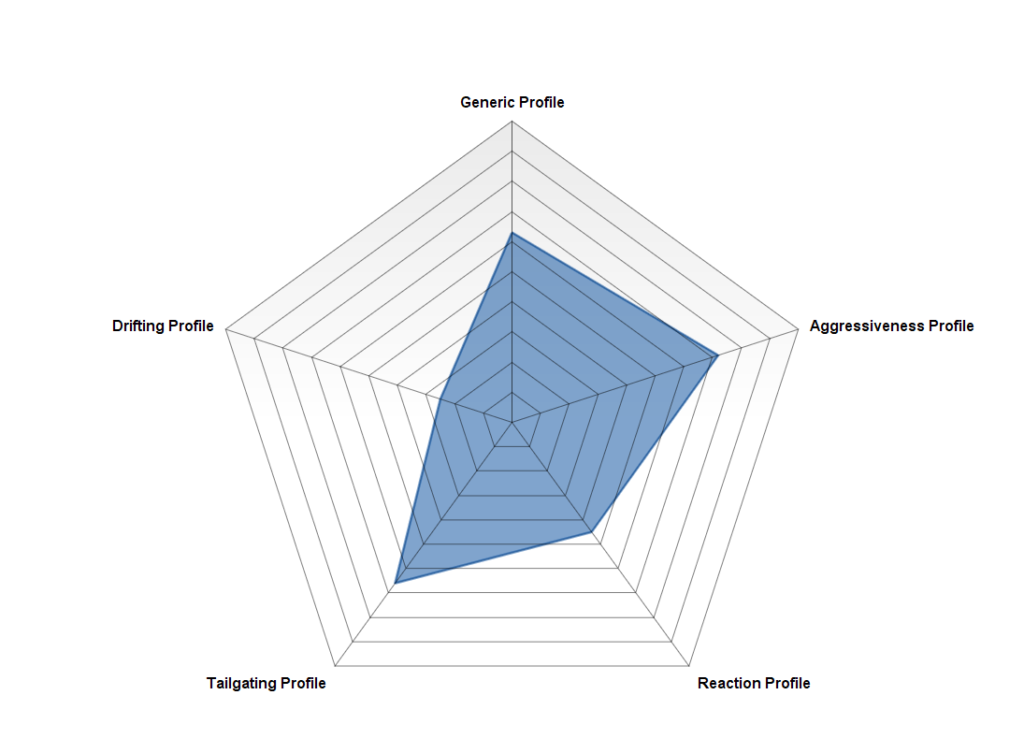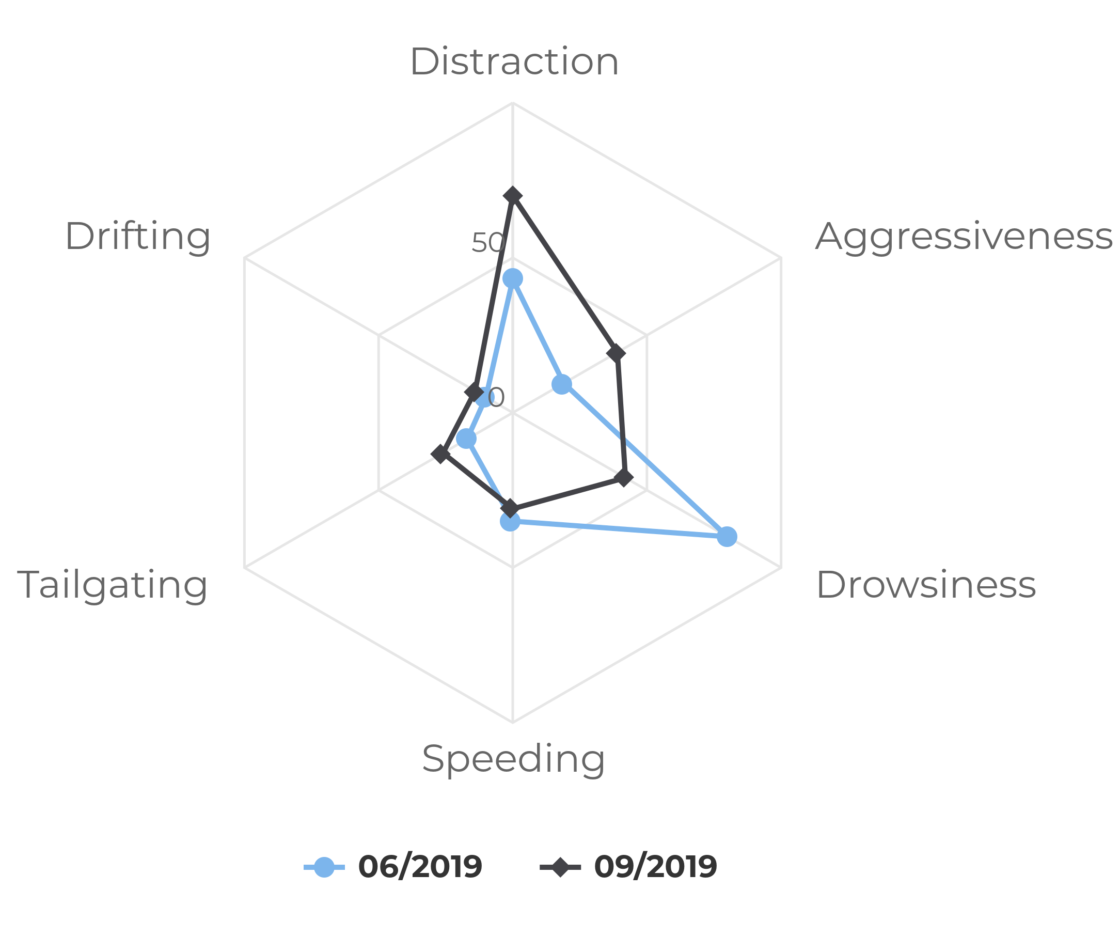We distinguish between two categories of measurements. The “classic measurements” corresponds to driver evaluation based on already existing technologies and which can be accomplished with GNSS and accelerometer. The new metrics developed by DriveTrust rely on the camera on DriveTrust’s real-time object detection capabilities.
Classic Driving Behaviour Evaluation
Those metrics are used by other devices already existing in the market. DriveTrust collects the following data and combines them into profiles:
- Generic driving behaviour, aka the “generic profile” which consists of:
- total distance driven and average distance driven per month
- nighttime hours driven
- hours driven in bad weather conditions
- Aggressive driving which we combine to the “aggressiveness profile” is built from the
- number of harsh acceleration and braking events
- strong acceleration in curve events
Innovative / New Driving Evaluation Metrics
DriveTrust is developing new driving behaviour evaluation metrics. For this purpose, we work closely with our car insurance partners. There are three main metrics categories:
- Reaction Time: we measure reaction time to traffic signs and traffic lights, which gives a “reaction profile” for each driver
- Distance to other cars: the combination of speed data from GPS and the distance estimate from the camera provides insight into the “tailgating profile” of the driver.
- Lane Departure: we track if the driver slowly drifts into the left or right side of the road. Hence, we generate a “drifting profile” for each driver

The combination of the reaction, tailgating and drifting profiles give the possibility to evaluate drivers better than with already existing technologies.


